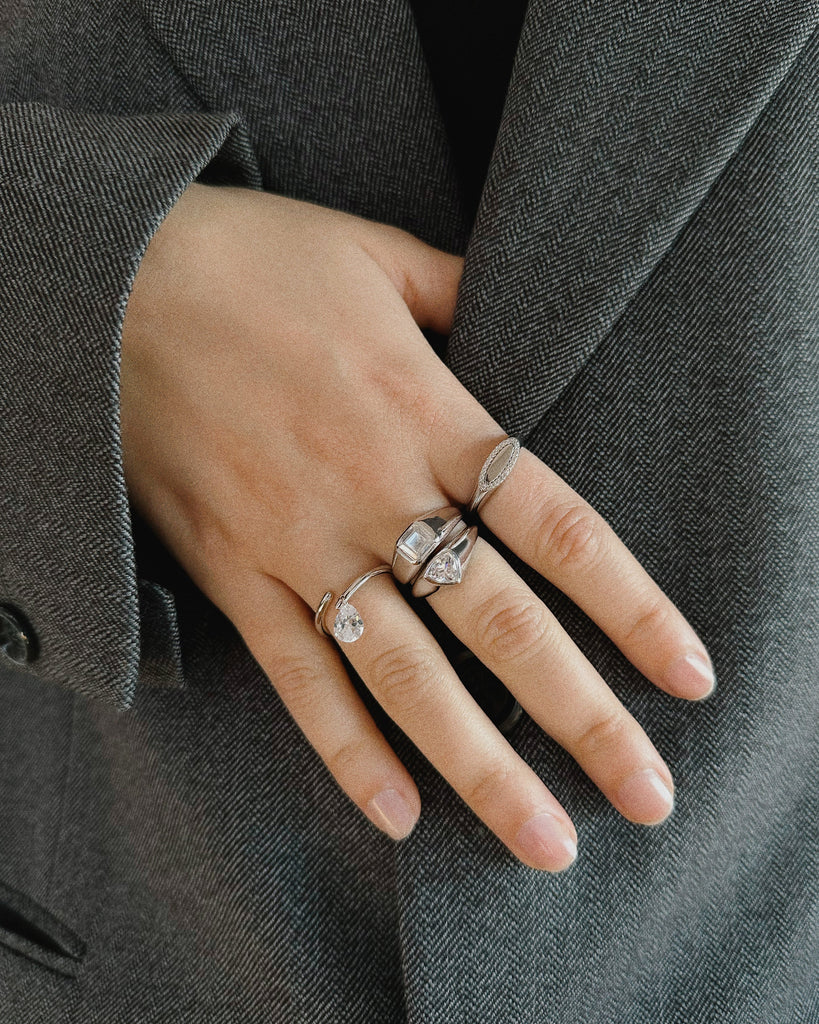Diamonds are the most precious (and famous) gems in the world, but extracting them is no easy task. Many are mined in poor countries and there is a very imbalanced supply chain, which raises ethical and environmental concerns.
But here comes good news: you can still revel in the diamonds’ magnetism with their twin sibling, lab-grown diamonds. Lab-grown diamonds display the same chemical properties as natural diamonds, as well as their breathtaking beauty, so much so that the standards for measuring their quality are the same.
The 4Cs are the must-follow guide to determine the rarity and value of both natural and lab-grown diamonds. Established by the Gemological Institute of America (GIA), these key qualities give us the tools to evaluate diamonds. A new C was added recently to the list: conflict-free. This last C is related to the origin of the diamond, confirming it has not been mined in a conflict zone. In our case, this C is not relevant, as all our diamonds are lab-grown, ensuring sustainability and human rights.

The 4 Cs
Want to become a diamond pro? Let’s have a look at the 4Cs and understand what they stand for and how they help determine the value of a diamond.
Cut
Maybe the most important of the Cs, the cut truly impacts a diamond’s beauty. The more faceted the diamonds' cut, the brighter the sparkle will be. This happens thanks to the internal reflection of the light, from one mirror-like facet to another. The round brilliant cut is the most popular one, but lab-grown diamonds can also have the rectangular emerald cut, the square princess cut, the oval cut, the slender marquise cut and the hybrid pear cut, one of the most rare ones.
Clarity
As natural diamonds are made with pressure and heat below the Earth, their formation process means that all of them contain inclusions (like uncrystallized carbon) and blemishes. The clarity of diamonds measures their purity, meaning the clearest they are, the brighter their brilliance will be. Given their complex structure, lab-grown diamonds also have these traces or blemishes, which elevate their value and rarity.
Carat
Carat is basically the weight of a diamond. One carat equals 200 milligrams and each carat can be subdivided into 100 points, being extremely precise. Usually, the bigger the diamond is, the rarer it will be, so the price per carat increases according to the diamond's size. But carats alone don't affect the value of a diamond: two diamonds with an equal carat weight can have different values based on the other Cs.
Color
Diamonds occur in a different variety of colors. From truly colorless to warm whites with hints of yellow, other hues can be extremely rare for diamonds, known as fancy colors (like fancy pink). Grading the color of a diamond is a very complex process, as the difference between shades is so subtle that it requires specific lighting, placing the diamond upside down and comparing it with a master sample.
In total, there are 23 shades: from ice white D (colorless) to warmer Z (light color). Colorless or clear white diamonds are the most desired, as that color (or lack of it) allows more refraction of light, adding more sparkle to the diamond.
As unique as you are, they say no two diamonds are the same. Feel their power in our Fine Jewelry collection, crafted with the most precious materials to become your most cherished treasure.

